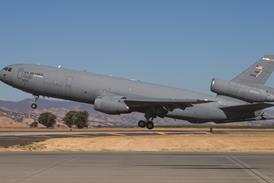Boeing's CST-100 spacecraft has successfully passed its preliminary design review (PDR), a major milestone for the programme.
At virtually the same time, Pratt & Whitney Rocketdyne announced a successful full-duration firing of CST-100's launch abort engine, the Bantam.
Combined, the two milestones earn Boeing $12.5 million under NASA's commercial crew development (CCDev) programme.
Completing PDR signifies that the designers are satisfied with the integrated design of the capsule, that design trades are largely completed and major changes to the capsule unlikely. The next similar milestone is the critical design review, which is the final review before construction and flight test.
The launch abort engine is intended to launch the capsule free of its launch vehicle in the event of disaster, much like an ejection seat in a military fighter aircraft. It is considered a crucial component of any crewed spacecraft. If unused during lift-off the rockets can be used for in-orbit thrust.
 |
|---|
©P&W Rocketdyne |
"The engine achieved full thrust on the 40,000-pound thrust-class engine while validating key operating conditions during engine start-up and shut down," says Terry Lorier, the Rocketdyne programme manager. "The tests provided key thermal and analytical data."
Further tests to the capsule are scheduled imminently, including a heat shield jettison test and hot-firing of Rocketdyne's attitude control engine.
Four companies were funded under the second round of CCDev contracts in 2009, including Boeing. The company has confirmed its intention to bid for CCDev's successor, called the commercial crew integrated capability (CCiCap), for which proposals are due on 23 March.
Neither Boeing nor Rocketdyne were able to immediately respond to questions.
Source: Flight International


























